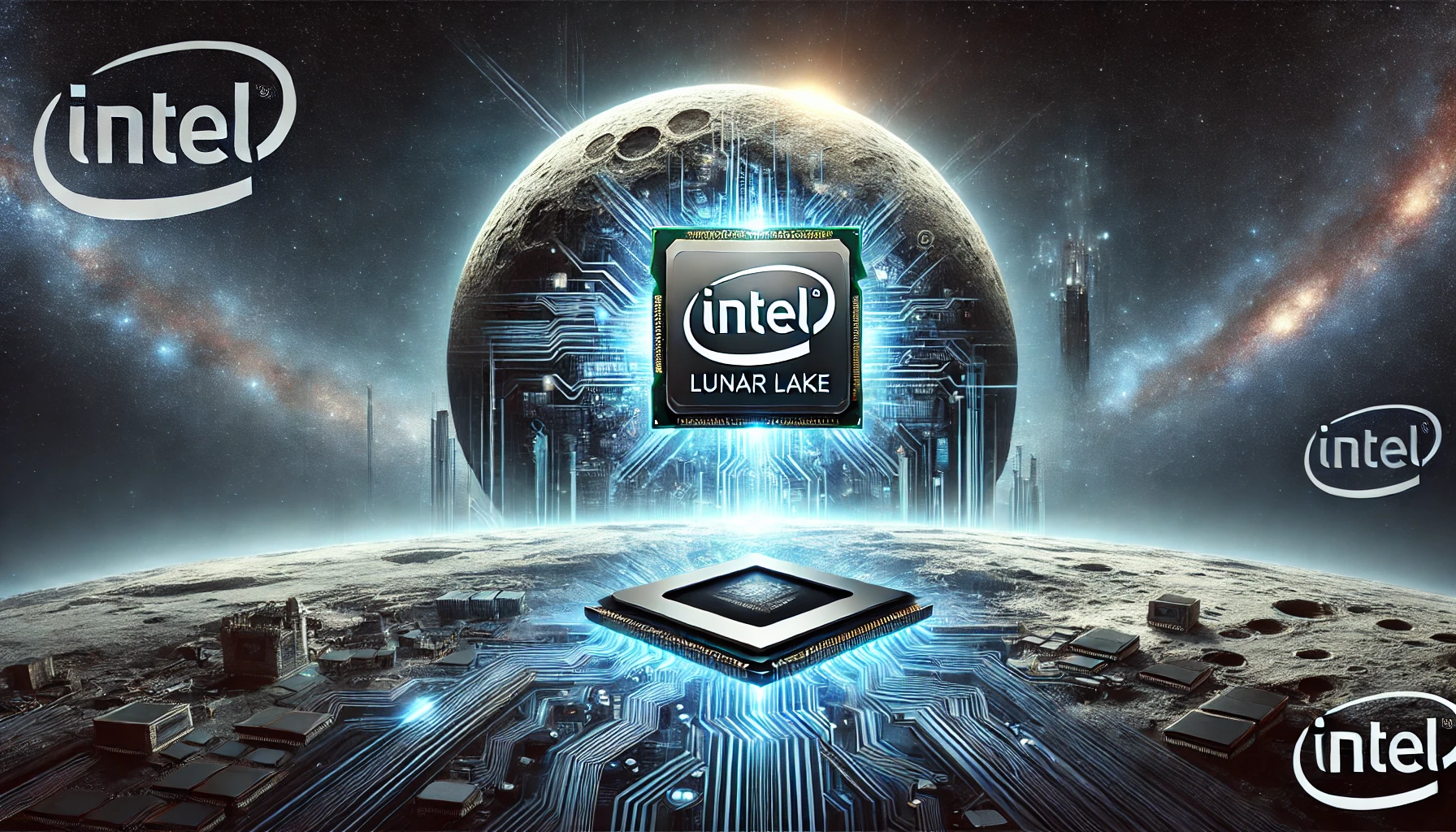Table of Contents
Brief Overview of Intel’s Lunar Lake
Intel’s recent unveiling of the Lunar Lake processor at Computex 2024 represents a significant leap in their processor technology. This article delves into the details of this groundbreaking development and its implications for the future of computing.

Importance of the x86 Architecture in the PC Industry:
The x86 architecture has been a cornerstone of the PC industry for decades, providing the foundation for the vast majority of personal and enterprise computing devices. Understanding the evolution and advancements in x86 is crucial for appreciating the impact of Intel’s new innovations.
Introduction to the Article’s Focus on Lunar Lake’s Innovations:
This article will explore how LL redefines x86 architecture, focusing on its revolutionary design, performance improvements, and enhanced features that position it as a formidable competitor in the processor market.
History of Intel’s Processor Development
Evolution from Meteor Lake to Lunar Lake:
Intel’s journey from Meteor Lake to LL highlights a series of incremental improvements and significant breakthroughs in processor design. Each generation builds upon the last, pushing the boundaries of performance and efficiency.
Strategic Importance of Taiwan for Intel’s PC Ecosystem:
Taiwan plays a critical role in Intel’s strategy, housing many key PC vendors and being a hub for semiconductor manufacturing. Intel’s presence in Taiwan, showcased through events like the Tech Tour, underscores the region’s importance in the global PC ecosystem.
Key Innovations in Lunar Lake
Overview of Lunar Lake’s Radical Design Departure from Traditional x86:
Lunar Lake represents a radical shift from traditional x86 architecture, moving away from incremental changes to embrace a more revolutionary approach that significantly enhances performance and power efficiency.
Detailed Explanation of the Platform’s Advancements from Meteor Lake:
Building on the foundation laid by Meteor Lake, LL introduces several key advancements, including improved CPU core design, advanced packaging techniques, and the integration of on-package memory.
Introduction of On-Package Memory:
On-package memory in Lunar Lake reduces latency and increases bandwidth, resulting in faster and more efficient data processing. This innovation is crucial for supporting high-performance computing tasks.
CPU Core Architecture
Description of Skymont Efficiency Cores (E-cores):
The Skymont E-cores in Lunar Lake are designed for high efficiency, allowing the processor to handle most tasks with minimal power consumption. This focus on efficiency helps extend battery life and reduce energy usage.
Comparison with Previous Generation Performance Cores (P-cores):
While previous Intel processors relied heavily on performance cores, Lunar Lake’s design shifts the focus to efficiency cores, reserving the more powerful P-cores for demanding tasks.
Performance and Power Efficiency Metrics of Skymont Cores:
Skymont cores deliver impressive performance metrics, with single-threaded performance improvements ranging from 38% to 68% over previous generations. They offer the same performance at one-third the power or up to twice the performance at marginally higher power levels.
Lion Cove P-cores Advancements:
Lion Cove P-cores also see significant improvements, providing a 14% performance uplift over their predecessors in Meteor Lake. This makes them the fastest cores in the CPU, suitable for handling the most demanding applications.
Performance Enhancements
Improvements in Single-Threaded Performance:
Single-threaded performance is crucial for many applications, and Lunar Lake achieves significant gains in this area, making it a powerful choice for both consumer and enterprise computing needs.
Dynamic Performance Capabilities:
LL’s dynamic performance capabilities allow it to adapt to different workloads, optimizing power usage and performance based on the task at hand. This flexibility enhances overall efficiency and user experience.
Thread Director Advancements for Workload Optimization:
The next generation of Intel’s Thread Director technology ensures that workloads are directed to the most appropriate cores, optimizing for both performance and efficiency. This technology prioritizes E-cores for less demanding tasks and P-cores for more intensive applications.
Graphics and AI Capabilities
Introduction of the Second-Generation GPU Architecture Xe2:
Lunar Lake features Intel’s second-generation GPU architecture, Xe2, which offers a 50% performance improvement over its predecessor. This new architecture is designed to handle modern graphics-intensive applications and deliver superior gaming experiences.
Comparison with Previous GPU Performance:
Compared to the previous generation, the Xe2 architecture provides significant performance enhancements, making Lunar Lake a compelling option for users who require high graphics performance.
AI Performance Enhancements with New XMX Engines:
Lunar Lake introduces new XMX engines that boost AI performance to 67 TOPS (Tera Operations Per Second). This makes the processor capable of handling complex AI workloads efficiently.
Integration and Performance of the NPU:
The Neural Processing Unit (NPU) in Lunar Lake delivers 48 TOPS of AI performance, complementing the GPU to provide a combined AI processing power of over 100 TOPS. This ensures that AI tasks are handled swiftly and efficiently.
Connectivity Features
Integration of Wi-Fi 7 and Bluetooth Logic:
Lunar Lake integrates advanced connectivity features, including Wi-Fi 7 and Bluetooth logic, providing faster and more reliable wireless connections. The new design reduces the size of the implementation while increasing throughput.
Thunderbolt 4 Connectivity Enhancements:
The processor includes four 40 Gb/s Thunderbolt 4 connections, offering high-speed wired connectivity options. Thunderbolt Share and other new features enhance the versatility and performance of these connections.
PCIe Gen5 and Gen4 Lanes for Wired Connectivity:
Lunar Lake supports additional connectivity options through built-in PCIe Gen5 and Gen4 lanes, which can be used for storage devices, 5G modems, and other peripherals that require high-speed data transfer.
Security Enhancements
Implementation of Microsoft Pluton Security Technology:
To enhance security, Lunar Lake incorporates Microsoft Pluton technology, providing robust protection against modern threats and ensuring data integrity.
Use of NPU for Enhanced Security Features:
The NPU in Lunar Lake is also leveraged for security purposes, allowing for advanced threat detection and mitigation. This offloads security tasks from the CPU, freeing up resources for other applications.
Reports from Security Partners on Performance Improvements:
Security partners like Trend Micro and Crowdstrike have reported significant performance improvements with Lunar Lake, highlighting its effectiveness in real-world security scenarios.
Competitive Landscape
Comparison with Arm-based Architectures from Apple and Qualcomm:
Lunar Lake is positioned as Intel’s answer to the growing competition from Arm-based processors, particularly those from Apple and Qualcomm, which have gained popularity for their performance and efficiency.
AMD’s Position in the Market:
While AMD remains a strong competitor, its focus on high-performance processors leaves a gap that Lunar Lake aims to fill with its balance of performance and power efficiency.
Intel’s Strategy to Maintain Relevance:
Intel’s strategy with Lunar Lake focuses on leveraging its strengths in x86 architecture while incorporating new innovations to stay competitive in a rapidly evolving market.
Challenges and Future Outlook
Scalability Concerns of Lunar Lake:
One of the potential challenges for Lunar Lake is its scalability, as it may not be as effective in higher-performance platforms. Addressing these concerns will be crucial for its success.
Anticipation for Panther Lake and Its Potential Solutions:
Intel’s upcoming Panther Lake processor, expected in 2025, is anticipated to address some of the scalability issues and further enhance performance and efficiency.
Certification for Windows Copilot+ and Its Significance:
Achieving certification for Windows Copilot+ is a key milestone for Lunar Lake, as it would enable Intel to compete more effectively with Qualcomm’s offerings in the PC market.
Final Thoughts
Recap of Lunar Lake’s Innovations and Their Impact on the x86 Architecture:
Lunar Lake represents a major step forward for Intel, introducing significant innovations that enhance performance, efficiency, and connectivity. These advancements have the potential to redefine the x86 architecture and position Intel as a leader in the PC market.
Intel’s Future Prospects in the Competitive PC Market:
Despite the challenges, Intel’s continued innovation and strategic positioning suggest a positive future for the company in the highly competitive PC market. Lunar Lake is a testament to Intel’s commitment to pushing the boundaries of processor technology.
For more blogs like this please visit: sleeping sirens
For more on this topic: Read more…
FAQs
- What is Intel’s Lunar Lake?
Intel’s Lunar Lake is a new processor architecture that represents a radical departure from traditional x86 designs, focusing on power efficiency and performance. - How does Lunar Lake improve performance and efficiency?
Lunar Lake improves performance and efficiency through its new CPU core architecture, advanced packaging, and integration of on-package memory, as well as enhancements in AI and graphics capabilities. - What are the key features of Lunar Lake’s new CPU architecture?
Key features include Skymont efficiency cores, Lion Cove performance cores, advanced Thread Director technology, and dynamic performance capabilities. - How does Lunar Lake compare to previous Intel processors?
Lunar Lake offers significant improvements over previous Intel processors in terms of performance, power efficiency, connectivity, and security features. - What advancements does Lunar Lake bring to AI and graphics performance?
Lunar Lake introduces the second-generation Xe2 GPU architecture, new XMX engines for AI processing, and a powerful NPU, collectively delivering over 100 TOPS of AI performance.

